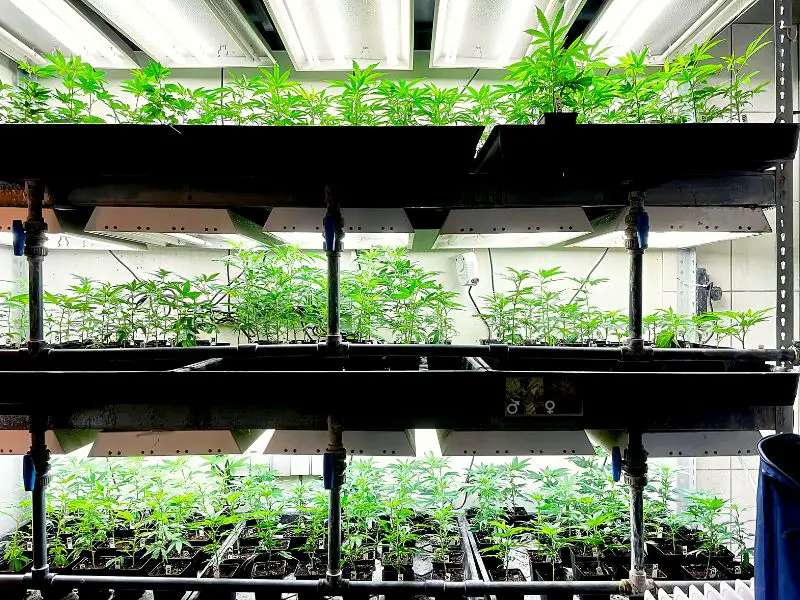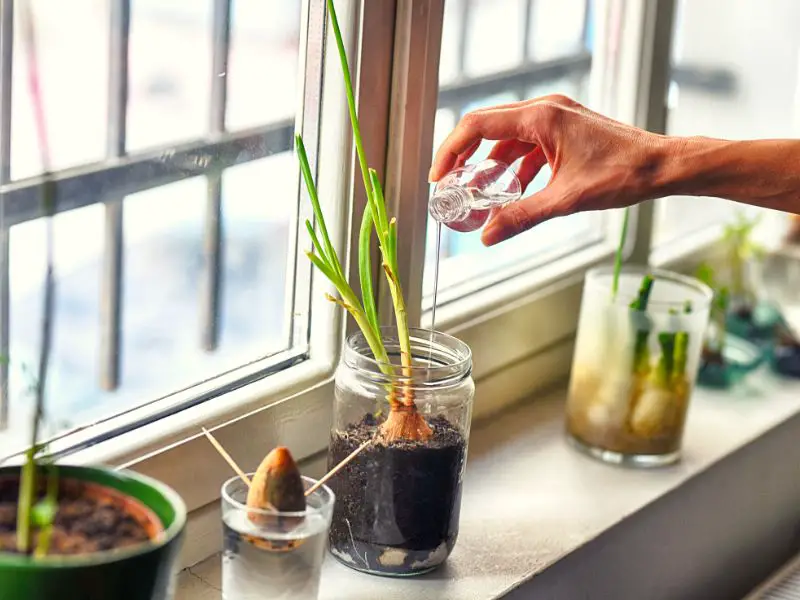We need vegetables, and most people, wish always to have them in their diet. Enter the indoor vegetable garden!
There are many ways to turn your home into a well-lit, lush environment that can house your vegetables while saving you money on groceries. You’ll be able (for instance) to harvest fresh greens right on your kitchen countertop or have cherry tomatoes at the ready for salads. Some of these gardens are so gorgeous you won’t even want to use them! The possibilities are nearly endless, so we’ll start with the basics for now.

This article will cover a few quick tips and the basics for setting up and maintaining an indoor vegetable garden. We’ll also go over a few more advanced topics, such as microclimate, vegetable terrarium, etc.
Let’s go!
How to Set up an Indoor Vegetable Garden?
If you have the correct equipment and put some thought into it, you can have fresh greens produced and harvested right in your backyard throughout the whole year. Here’s something you need to know before starting an indoor vegetable garden.
1. Select a Dedicated Space
This is the essential part of any indoor gardening project. It won’t work out if you don’t have a proper place to plant your garden. The best space for this kind of garden is a south-facing one and receives plenty of natural light from a window. But if your space is limited to sunlight, you can always go for a grow light.
In this way, you’ll be able to start and grow your vegetables indoors while also providing them with a suitable environment where they’ll be able to flourish.
It would help if you also had an area that could fit all the necessities for your garden. These include equipment such as soil, pots (or containers), lighting, and even some fertilizer in some cases, depending on what kind of plants you’re growing.
2. Find Out What Vegetables to Grow Indoors
Growing vegetables indoors takes effort, so you should know which veggies will thrive in your house before you begin. Here’s a list of vegetables you can grow indoors year-round. It varies by region, but these are the most commonly grown vegetables that will do well in indoor settings:
Vegetables
- Tomatoes
- Squash
- Bell Peppers
- Lettuce
- Cucumbers
- Carrots
- Spring Onions
- Hot Chili Peppers
- Scallions
- Microgreens like kale, wheatgrass, spinach, or sprouts
Herbs
- Basil
- Mint
- Oregano
- Parsley
- Thyme
- Tarragon
- Rosemary
3. Look For Appropriate Containers
Tomatoes and peppers need at least one to two gallons of space, but greens can strive in nearly any container or pot. If you don’t want to worry about maintaining a watering schedule, you may want to look into obtaining a container that can water itself. You also need a nice plastic container with a hole in the bottom for drainage to keep the soil from getting too saturated.
4. The Right Temperature and Climate
The number one problem with indoor gardens is the lack of a suitable climate. Many people will put their plants in areas that get too little light, moist, or cold.
If you want to grow your vegetables properly, you should find a place where the temperature is around 23 degrees celsius (75 degrees Fahrenheit) and receive plenty of natural sunlight from a window. Avoid areas where the temperature fluctuates much because doing so, can cause your plants to become stressed, and they may not produce as well.

5. Balance the Number of Fertilizers
If you choose to take care of your plants in the right way, you should also have to control the amount of fertilizer. Too much fertilizer can cause leggy plants and molds, while not enough may result in smaller fruit. If you live in a warm climate, be careful because too much heat can damage your plants. Ensure that you’re using water-soluble and organic soil fertilizers that won’t harm your vegetables.
6. Humidity
Most homes have low humidity levels and are dry, so if that’s the case, you should buy a humidifier to adjust the moisture levels in your indoor garden to make sure that your plants keep growing. If your plants get too dry, they will become deformed and enfeebled.
Wet soil also can lead to poor root growth. Most indoor gardens need a humidity level of 40 to 60 percent, so it’s essential to ensure that you’ll have the correct level in your plants’ environment.
7. Air Circulation
Don’t forget that you need to provide your plants with air circulation, which will also help with the humidity. When you have too much moisture in the air, your plants will get moldy. You will want to consider having a fan in your garden so that there’s plenty of attitude for your plants to breathe and ventilate the room to prevent moisture from building up and damaging the roots of the plants.
Hydroponic Growing
“Hydroponics” refers to growing plants in water instead of soil.
Compared to planting in the soil where the roots of a plant are always looking for the required nourishment to sustain its growth, Hydroponic plants are nourished with nutrient-rich solutions, oxygen, and water and are grown in inert growth material.

As long as a plant’s root system has direct access to water and nutrients, it doesn’t need to exert itself to collect food and water. Now this energy, otherwise, is diverted into plant growth instead.
As a result, plants grow faster, produce more, and have better-quality fruit. Because the plants are grown without soil, they’re also much easier to maintain and clean. In addition, hydroponic growing uses 3 times less water than soil farming which reduces water consumption and saves energy.
Kitchen Scrap Gardening
Kitchen scrap gardening is the pinnacle of recycling. It is eco-friendly, can save money on groceries, and is engaging, hands-on science education. So what’s the big deal? Simple:
You can save about $1,000 a year by recycling all your food scraps, which is enough to pay for the cost of composting and fertilizing at a local garden center. That’s a pretty good return on your investment.
Indoor Vegetable Terrarium
An indoor vegetable terrarium is an enclosed glass container with a small amount of soil at the bottom and a top layer of gravel. The plants grown in such containers are specimens from the lowest layer of soil or different parts of the world. These plants require light, water, and nutrients for growth. The most commonly grown vegetables in terrariums are Dwarf tomato plants, Dwarf blueberry plants Herbs such as mint, thyme, and oregano.

Author’s Note
In conclusion, it is possible to grow vegetables indoors throughout the year with a little bit of effort and some knowledge. If you can keep your plants healthy and happy and keep them from being stressed, you will be able to enjoy sweet, juicy tomatoes for months and months on end.
The following guides can help you learn more about plants, and herbs, and how they can benefit you:
- 10 Best Home Office Plants for a Green Workspace
- The Best Way to Grow Herbs Indoors: What, How, and Why To Plant Herbs
- Natural Skincare Treatments for a Healthy Glowing Skin
- The Essential Guide To Botanical Perfumes
We hope you find this helpful article. If you have any questions or comments, please add them below, we’d love to hear you!


6 thoughts on “How to Start an Indoor Vegetable Garden: Strategies for Success”